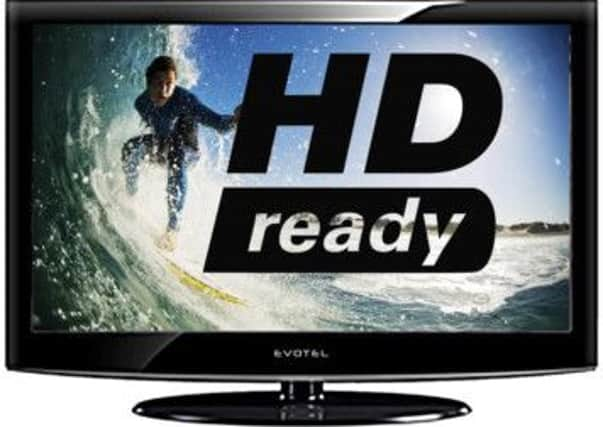Is your TV REALLY high definition?


You might, for instance, be forgiven for thinking that if your new set is described as “Full HD” or even “HD ready” it would be capable of receiving programmes through your aerial in high definition. But that’s not always the case – especially if you opt for a cheap model.
The fact is that when manufacturers speak of HD, they’re usually referring to the screen and not the receiver. In other words, it’s code for letting you know that the set is able to display high definition pictures from an outside source but can’t generate them itself. For practical purposes, it means you can watch in HD only via an external satellite, cable or Freeview box, games console or Blu-ray player.
Advertisement
Hide AdAdvertisement
Hide AdAll areas can now receive HD channels through a normal aerial, with no need for a set-top box. But unless your TV is specifically branded “Freeview HD” it will be blind to them. This is because a different tuner is needed to receive HD transmissions, and only the more expensive models have them.
Separate HD boxes start at £50 on the High Street, for either Freeview or Freesat, and must be connected with an HDMI cable to preserve the high definition signal. If you don’t already have one of these boxes and you’re considering a new TV, be sure to factor in the extra cost. A genuinely HD set may save you money overall, not to mention the messy wiring round the back.
Neither configuration will record programmes – but there is now a cheaper option than a full-blown personal video recorder. Many new TVs will record shows on to a USB stick, which you plug into a socket on the back. They are not necessarily as functional as a stand-alone box but they’re just as easy to programme. Even cheap, supermarket models sometimes offer this facility – ideal for making occasional recordings on a bedroom TV.
You may indeed be pleasantly surprised by the quality of the digital reception in such rooms, even when there isn’t an aerial socket. Freeview is not prone to visual artefacts like ghosting and patterning; the signal is more-or-less just on or off.
Advertisement
Hide AdAdvertisement
Hide AdMeanwhile, if you opt for only a high-ish definition TV, get one with a reasonable number of HDMI sockets – they are your only sources for watching in HD. Many sets have only two – and if you already have a Blu-ray and an Xbox, you’re clean out of options.